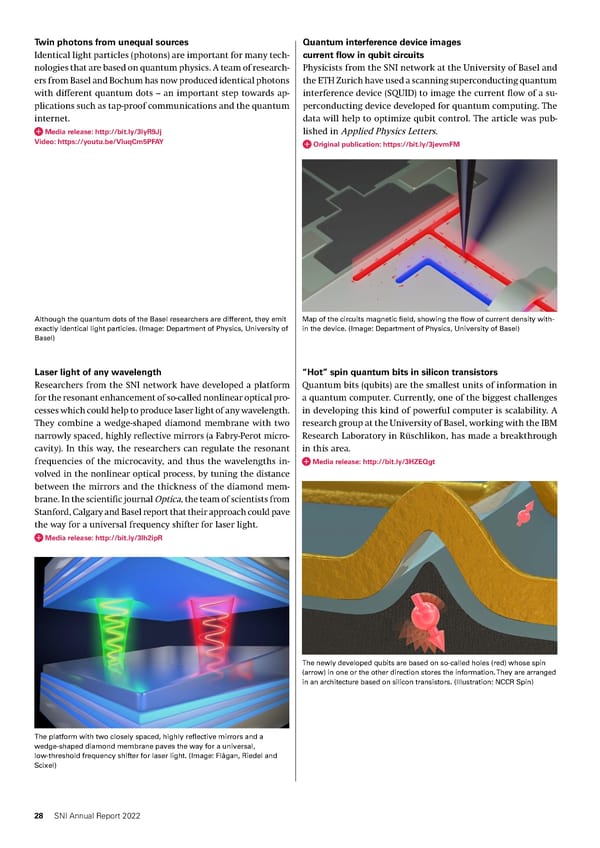Twin photons from unequal sources Quantum interference device images Identical light particles (photons) are important for many tech- current flow in qubit circuits nologies that are based on quantum physics. A team of research- Physicists from the SNI network at the University of Basel and ers from Basel and Bochum has now produced identical photons the ETH Zurich have used a scanning superconducting quantum with different quantum dots – an important step towards ap- interference device (SQUID) to image the current flow of a su- plications such as tap-proof communications and the quantum perconducting device developed for quantum computing. The internet. data will help to optimize qubit control. The article was pub- Media release: http://bit.ly/3lyR9Jj lished in Applied Physics Letters. Video: https://youtu.be/VluqCm5PFAY Original publication: https://bit.ly/3jevmFM Although the quantum dots of the Basel researchers are different, they emit Map of the circuits magnetic field, showing the flow of current density with- exactly identical light particles. (Image: Department of Physics, University of in the device. (Image: Department of Physics, University of Basel) Basel) Laser light of any wavelength “Hot” spin quantum bits in silicon transistors Researchers from the SNI network have developed a platform Quantum bits (qubits) are the smallest units of information in for the resonant enhancement of so-called nonlinear optical pro- a quantum computer. Currently, one of the biggest challenges cesses which could help to produce laser light of any wavelength. in developing this kind of powerful computer is scalability. A They combine a wedge-shaped diamond membrane with two research group at the University of Basel, working with the IBM narrowly spaced, highly reflective mirrors (a Fabry-Perot micro- Research Laboratory in Rüschlikon, has made a breakthrough cavity). In this way, the researchers can regulate the resonant in this area. frequencies of the microcavity, and thus the wavelengths in- Media release: http://bit.ly/3HZEQgt volved in the nonlinear optical process, by tuning the distance between the mirrors and the thickness of the diamond mem- brane. In the scientific journal Optica, the team of scientists from Stanford, Calgary and Basel report that their approach could pave the way for a universal frequency shifter for laser light. Media release: http://bit.ly/3Ih2ipR The newly developed qubits are based on so-called holes (red) whose spin (arrow) in one or the other direction stores the information. They are arranged in an architecture based on silicon transistors. (Illustration: NCCR Spin) The platform with two closely spaced, highly reflective mirrors and a wedge-shaped diamond membrane paves the way for a universal, low-threshold frequency shifter for laser light. (Image: Flågan, Riedel and Scixel) 28 SNI Annual Report 2022
 SNI Annual Report 2022 Page 27 Page 29
SNI Annual Report 2022 Page 27 Page 29
